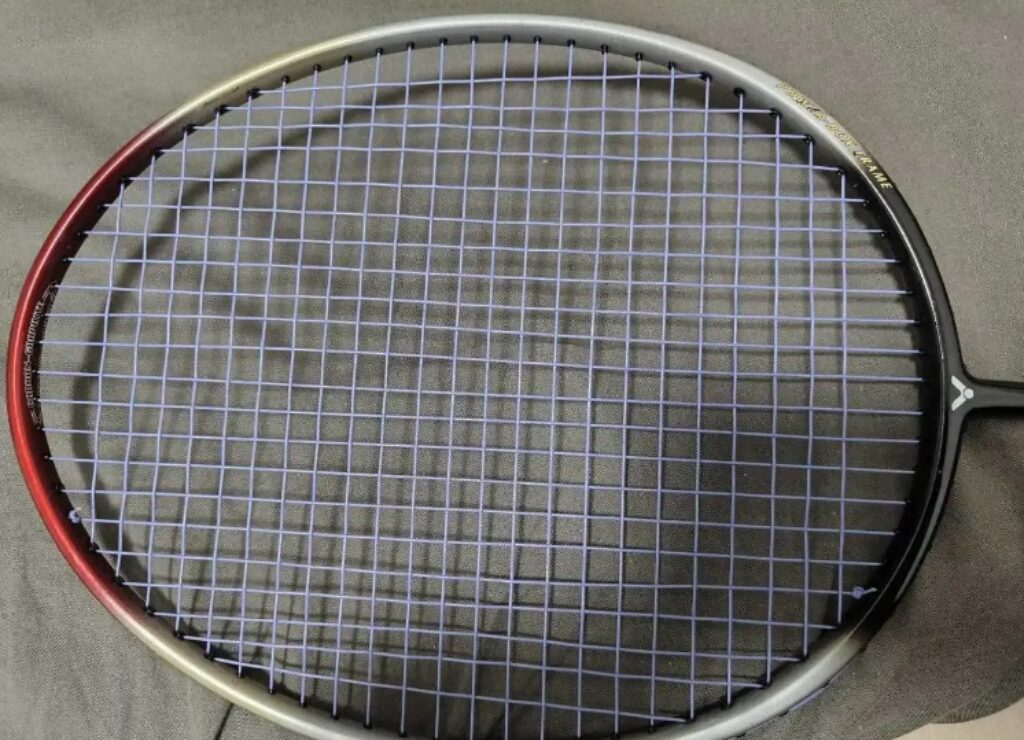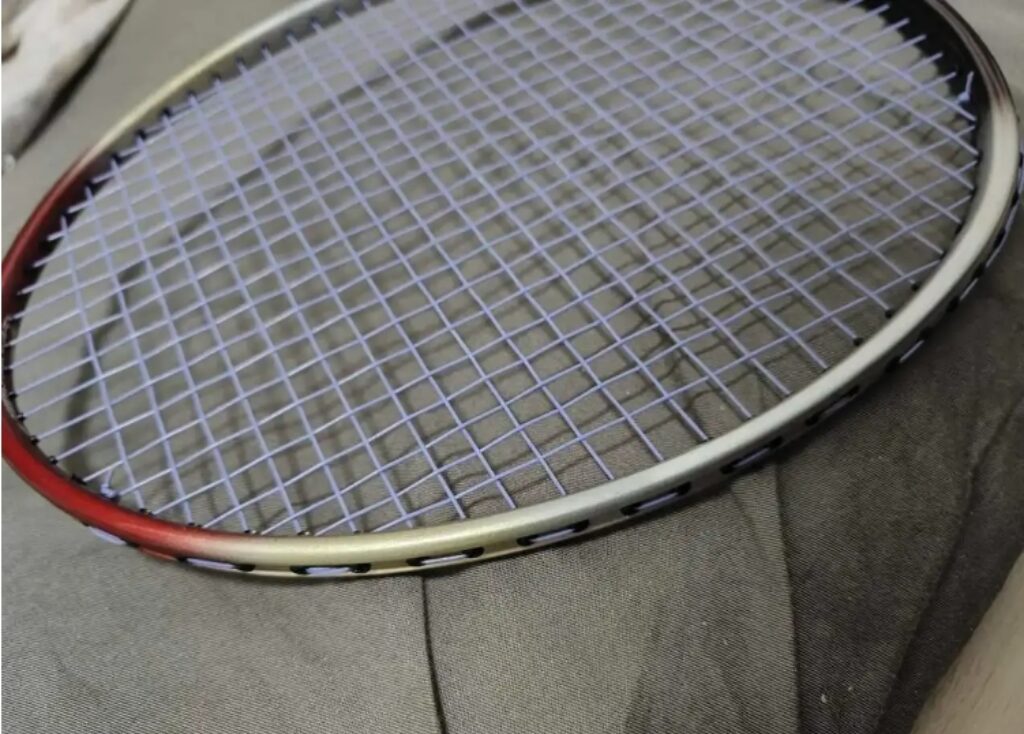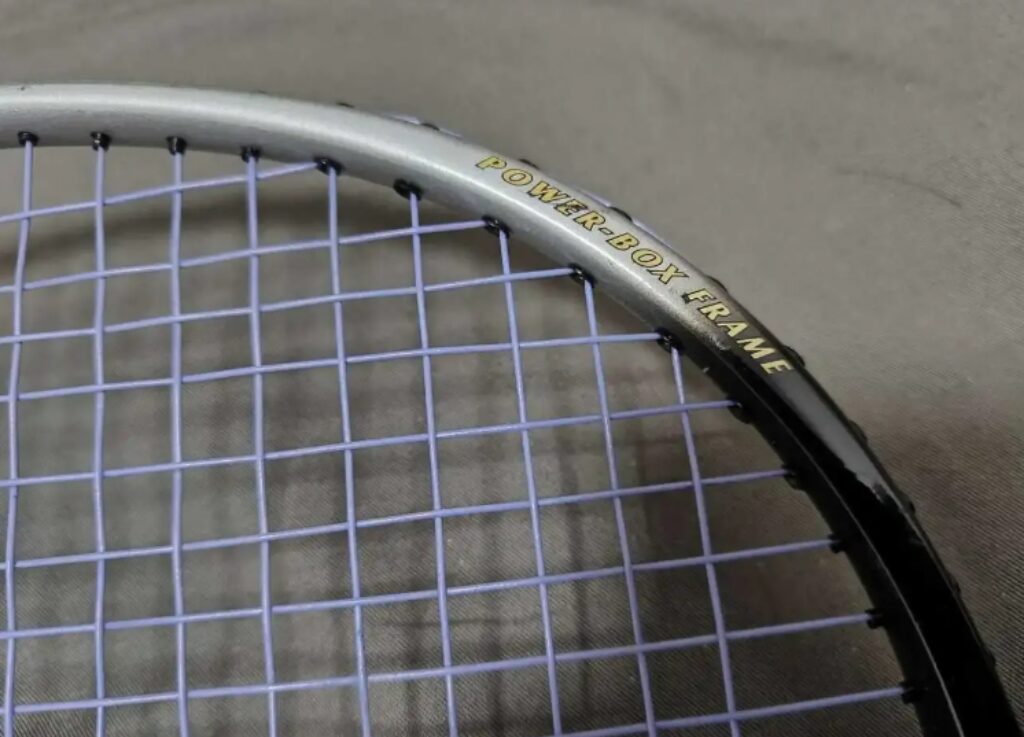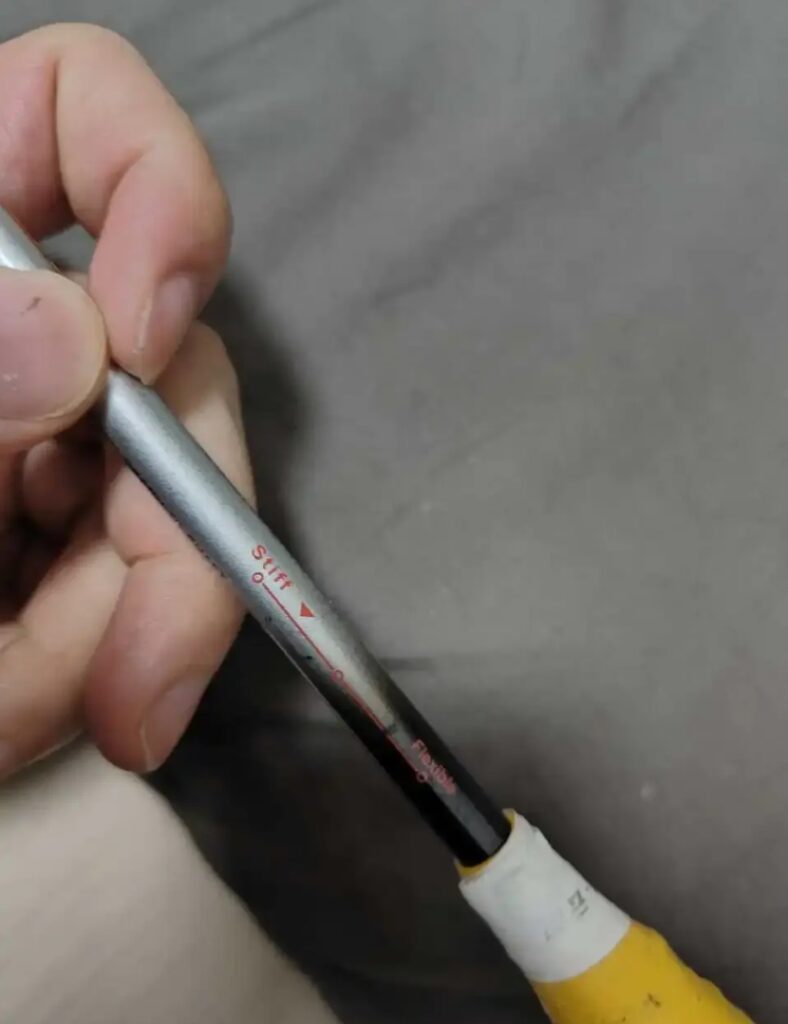I am the gravedigger of the Challenger series, the gravedigger of the Pulsar series. I am the gravedigger of the Explorer series, and I am also the gravedigger of the Columbia series. Currently, there aren’t many models left between me and the first bullethead, the Columbia 1000.
Of course, I’m also doubtful that I can still find such ancient equipment.

Specifications: 3UG5, full length 665mm, with a cap, total weight in use 91.57g, balance point 289mm, shaft length 210mm, medium stiffness, boxy bullethead frame, 72-hole string bed, 9–3 o’clock string grooves, warranty of 26 lbs, strung with 24 lbs training string.
The 2300 is truly ancient, and it’s still the standard length of 665mm. Victor didn’t put much effort into decorating it, after all, two or three decades ago, the means were indeed limited. The sides of the frame are adorned with a continuous golden-yellow sticker, creating a basic sense of layering with the black at the top of the frame and the transition to the new color, and that’s it. Even the artistic design of the shaft model isn’t something I can describe—it’s just that.

Although this bullethead looks quite large, the sweet spot is still relatively dense. The strings are too weak to bring out the racket’s power, or perhaps the small sweet spot didn’t allow me to consistently hit it to generate power. So, even though the racket’s swing weight is low and feels comfortable to use, there’s always a sense of “not being able to hit with power.” This feature is relatively easy to avoid during warm-ups when the pace isn’t fast and it’s easier to find the hitting point, but I can foresee that it will cause me trouble in subsequent matches. Also, I really can’t get used to standard-length rackets…

Although the official positioning of the racket is slightly stiff, either due to material aging or the old materials themselves, the overall hardness of the racket feels only moderate by today’s standards. Even with the shorter shaft, there’s nothing particularly difficult about driving it. While it’s still not a racket suitable for beginners, for players who have mastered the correct hitting technique, getting past the 2300’s threshold shouldn’t be an issue.
Because of this, when there’s an opportunity to generate full power and hit downward shots, the 2300 can be quite deceptive. Its excellent power feedback allows me to produce decent offensive shots when I hit the sweet spot. However, the materials overall are really subpar, with a disjointed feel in power transmission and very little elasticity.

However, the racket’s strength clearly doesn’t lie in offense, as its frame characteristics make it unsuitable for fast-paced matches. Its low tolerance makes it hard to hit the shuttle head or execute quick, sharp shots comfortably. It’s passable for soft touch shots near the net, such as blocking and follow-up plays, but flat drives are really weak. For most of the match, it gave me a dull and unresponsive feel, with an overall muddled experience. It urgently needs a change of strings, but the issues it has exposed are already enough for me to give up on giving it another chance.
It’s fine for collection, as it’s a racket with a lot of era-specific characteristics and a relatively classic design. But if you want to use it for serious competition, you’d better stick with something else.


Leave a Reply